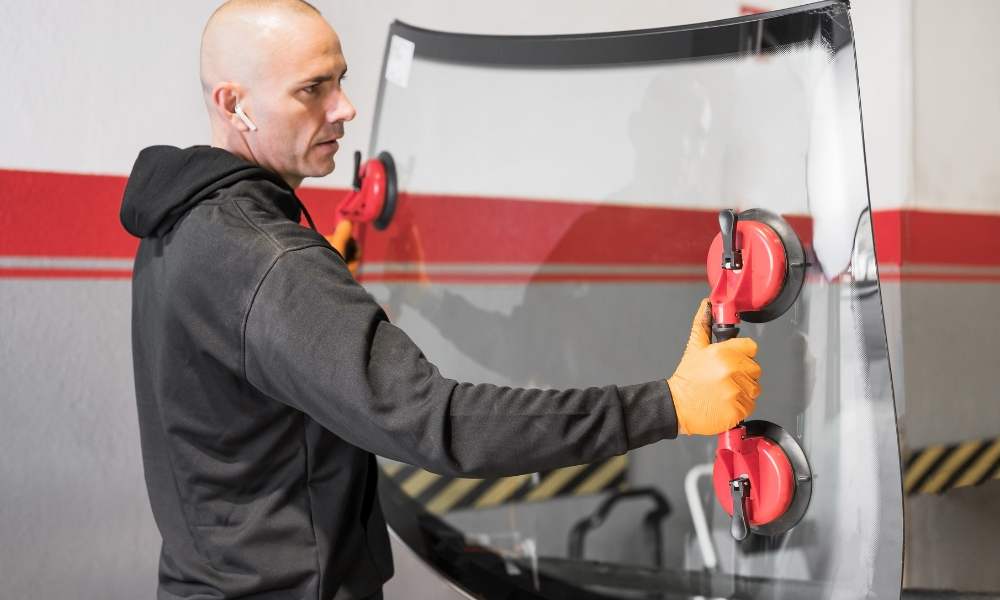The Hidden Dangers of a Shattered Windshield: Why Immediate Repair...
How to Choose the Right Auto Windshield Glass for Your Vehicle

Your vehicle’s windshield is not just a piece of glass; it plays a crucial role in providing structural integrity and protecting you from external elements. When it comes to choosing the right auto windshield glass, there are several factors to consider. In this comprehensive guide, we will walk you through the process of selecting the appropriate windshield glass for your vehicle. From compatibility to durability and various options available, we’ll cover everything you need to know to make an informed decision.
The Process Of Selecting The Appropriate Windshield Glass For Your Vehicle
1. Understand Your Vehicle’s Specifications
Before diving into the world of auto windshield glass, it’s important to understand your vehicle’s specifications. Different makes and models have specific requirements when it comes to windshield glass. Check your vehicle’s manual or consult with an expert to determine the exact specifications, including size, shape, and curvature, to ensure a perfect fit.
2. Consider Safety Standards
Safety should always be a top priority when choosing windshield glass. Look for glass that meets or exceeds the safety standards set by the relevant authorities in your region. For example, in the United States, the Department of Transportation (DOT) regulates safety standards for automotive glass. Look for the DOT marking on the glass to ensure compliance.
3. Evaluate Glass Types
There are different types of auto windshield glass available, each with its own advantages and disadvantages. Here are some common types to consider:
a. Laminated Glass:
Laminated glass is the most common type used in windshields. It consists of two layers of glass with a layer of plastic interlayer in between. This design enhances strength and prevents shattering upon impact, offering excellent protection from flying debris.
b. Tempered Glass:
Tempered glass is known for its strength and safety properties. It undergoes a heating and rapid cooling process, making it stronger than regular glass. While tempered glass is widely used for side and rear windows, it is not recommended for windshields as it tends to shatter into small pieces upon impact.
c. Acoustic Glass:
Acoustic glass is designed to reduce noise transmission from outside the vehicle, offering a quieter and more comfortable driving experience. It incorporates a special interlayer that dampens sound vibrations.
d. Solar-Control Glass:
If you live in a hot climate, consider solar-control glass that helps to block UV rays and reduce heat buildup inside the vehicle, improving comfort and reducing the strain on your air conditioning system.
4. Explore Additional Features
When selecting auto windshield glass, you can also choose from various additional features and options:
a. Tinted Glass:
Tinted glass reduces glare and offers privacy. However, be mindful of local regulations regarding tinted windshields, as there are legal limits on the level of darkness allowed.
b. Heated Glass:
Heated windshield glass helps to melt ice and snow, providing improved visibility during colder months. This feature can be particularly useful in regions with harsh winters.
c. Rain-Sensing Wipers:
Some windshields come with a built-in sensor that detects rain and automatically activates the wipers. This feature enhances convenience and ensures clear visibility during rainy conditions.
5. Seek Professional Assistance
Choosing the right auto windshield glass can be a complex task. If you’re uncertain about the specifications or options available for your vehicle, it’s best to seek professional assistance. Consult with an automotive glass specialist or visit a reputable auto glass shop. These experts can guide you through the selection process and provide recommendations based on your specific needs and preferences.
Conclusion
Choosing the right auto windshield glass for your vehicle is essential for both safety and overall driving experience. Consider your vehicle’s specifications, prioritize safety standards, and evaluate different glass types and additional features. Seek professional advice when necessary to ensure you make an informed decision. Remember, your windshield is not just a transparent barrier—it’s a crucial component that deserves careful consideration for the well-being and comfort of both you and your passengers.
By following the guidelines outlined in this blog post, you can confidently choose the right auto windshield glass that perfectly suits your vehicle’s needs, providing enhanced safety, durability, and driving enjoyment.
Popular Searches
Audi Windshield Replacement in Santa Clara County
Auto Car Window Tinting in Santa Clara County
Auto Glass Repair and Replacement in Santa Clara County
Auto Glass Repair in Santa Clara County
BMW Windshield Chip Repair in Santa Clara County
BMW Windshield Repair and Replacement Services in Santa Clara County
Car Window Repair in santa clara
Car Window Repair in Santa Clara County
Commercial truck windshield replacement
Dodge Windshield Repair and Replacement Services in Santa Clara County
Dodge Windshield Replacement in Santa Clara County
Glass repairs for cars near me
Honda pilot windshield replacement cost
Honda Windshield Repair and Replacement Services in Santa Clara County
Honda Windshield Replacement in Santa Clara County
Hyundai Tucson windshield replacement
Hyundai Windshield Repair and Replacement Services in Santa Clara County
Hyundai Windshield Replacement in Santa Clara County
Jeep Windshield Repair and Replacement Services in Santa Clara County
Jeep Wrangler Windshield Replacement in Santa Clara County
Kia Windshield Repair and Replacement Services in Santa Clara County
Kia Windshield Replacement in Santa Clara County
Mobile Auto Glass in Santa Clara County
Mobile Auto Glass Repair in Santa Clara County
Mobile glass replacement near me
Same day windshield repair near me
Toyota Camry side mirror glass replacement
Windshield Calibration in Santa Clara County
Windshield Chip Repair in Santa Clara County
Windshield chip repair near me
Windshield Repair and Replacement Services in Santa Clara County
Windshield Repair and Replacement Services Near Me
Windshield Repair in Santa Clara County
Windshield repair service near me
Windshield Replacement Near Me
Windshield Replacement Services in Santa Clara County
Read more Articles
The Costly Consequences of Neglecting Windshield Damage: How Repairs Save You Money
The Costly Consequences of Neglecting Windshield Damage: How Repairs Save...
Common Signs of a Defective Windshield: How to Spot Potential Issues
Common Signs of a Defective Windshield: How to Spot Potential...



